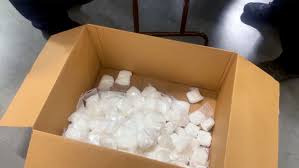Blog
Ketamine Crystals Dose

Ketamine Crystals Dose, Ketamine Crystals Dose, Ketamine, originally developed as an anesthetic, has gained increasing attention in both medical and recreational contexts. While its use in clinical settings is typically controlled and administered by professionals, recreational use—especially of ketamine in its crystal form—raises serious questions about safety, dosage, and effects. In this article, we explore everything you need to know about ketamine crystals dose, including safe practices, potential risks, and harm reduction strategies.
What Are Ketamine Crystals?
Ketamine crystals are the solid, crystalline form of ketamine hydrochloride. They are usually crushed into powder for consumption, most commonly via insufflation (snorting). Unlike pharmaceutical ketamine solutions, crystal ketamine is often found in unregulated settings, which adds to the complexity of accurate dosing.
Typical Ketamine Crystals Dose Ranges
It’s essential to understand that ketamine affects individuals differently based on body weight, tolerance, and the presence of other substances. Here’s a general breakdown of ketamine crystals dose by insufflation (snorting), often used recreationally:
-
Threshold dose: 10–20 mg
-
Light dose: 20–40 mg
-
Common dose: 50–100 mg
-
Strong dose: 100–150 mg
-
K-hole dose: 150–200+ mg
⚠️ Warning: Exceeding 150 mg in a single session can lead to the so-called “K-hole,” a dissociative state where users may experience out-of-body sensations and severe disorientation.
Routes of Administration
-
Insufflation (snorting): The most common method for recreational use. Effects begin within 5–15 minutes.
-
Intramuscular (IM) injection: Used in medical or therapeutic settings; rapid onset.
-
Oral consumption: Less common and requires higher doses due to low bioavailability.
-
Intravenous (IV): Strictly medical; not recommended for unsupervised use.
Duration and Effects
-
Onset: 5–15 minutes (snorted)
-
Peak: 30–60 minutes
-
Total duration: 1–2 hours
-
After-effects: Drowsiness, confusion, and mild depression may last up to 24 hours
The intensity and nature of effects depend on the ketamine crystals dose and user tolerance. At lower doses, ketamine can produce mild euphoria and detachment. Higher doses lead to intense dissociation and hallucinations.
Risks and Side Effects
Using ketamine crystals without proper medical guidance carries significant risks:
-
Short-term side effects: Nausea, confusion, blurred vision, dizziness
-
Long-term effects: Urinary tract issues, cognitive impairment, dependence
-
Psychological risks: Anxiety, depression, dissociation, psychosis (in high or repeated doses)
Harm Reduction Tips
If you or someone you know chooses to use ketamine recreationally, follow these harm reduction strategies:
-
Start low, go slow – Begin with a small dose to test sensitivity.
-
Use a milligram scale – Eyeballing doses is risky; accurate measurement is crucial.
-
Stay hydrated – But avoid excessive water intake, which can also be harmful.
-
Avoid mixing – Combining ketamine with alcohol, opioids, or benzodiazepines increases overdose risk.
-
Have a sober sitter – A trusted friend can ensure safety during intense experiences.
-
Allow time for recovery – Avoid frequent use to reduce the risk of addiction and physical harm.
Final Thoughts
While ketamine has promising medical uses, including treatment-resistant depression and chronic pain management, the ketamine crystals dose used recreationally must be approached with extreme caution. Without proper education, tools, and respect for its potency, ketamine use can quickly turn dangerous. Whether you’re a curious reader, a user, or someone concerned about a loved one, understanding ketamine dosing and risks is the first step in staying informed and safe.
You Might Also Like These:
